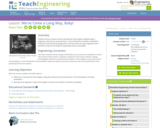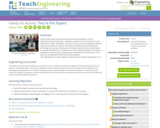
A close-up look of an Intracytoplasmic Sperm Injection. [1:25]
- Subject:
- Science
- Material Type:
- Audio/Video
- Provider:
- Howard Hughes Medical Institute
- Provider Set:
- BioInteractive
- Date Added:
- 10/01/2022

A close-up look of an Intracytoplasmic Sperm Injection. [1:25]

Biology 2e is designed to cover the scope and sequence requirements of a typical two-semester biology course for science majors. The text provides comprehensive coverage of foundational research and core biology concepts through an evolutionary lens. Biology includes rich features that engage students in scientific inquiry, highlight careers in the biological sciences, and offer everyday applications. The book also includes various types of practice and homework questions that help students understand—and apply—key concepts. The 2nd edition has been revised to incorporate clearer, more current, and more dynamic explanations, while maintaining the same organization as the first edition. Art and illustrations have been substantially improved, and the textbook features additional assessments and related resources.


By the end of this section, you will be able to do the following:
Explain fetal development during the three trimesters of gestation
Describe labor and delivery
Compare the efficacy and duration of various types of contraception
Discuss causes of infertility and the therapeutic options available

Students discuss several human reproductive technologies available today pregnancy ultrasound, amniocentesis, in-vitro fertilization and labor anesthetics. They learn how each technology works, and that these are ways engineers have worked to improve the health of expecting mothers and babies.

Student teams learn about and devise technical presentations on four reproductive technology topics pregnancy ultrasound, amniocentesis, in-vitro fertilization or labor anesthetics. Each team acts as a panel of engineers asked to make a presentation to a group of students unfamiliar with the reproductive technology. Each group incorporates non-lecture elements into its presentation for greater effectiveness. As students learn about the technologies, by creating a presentation and listening to other groups' presentations, they also learn more about the valuable skill of technical communications.